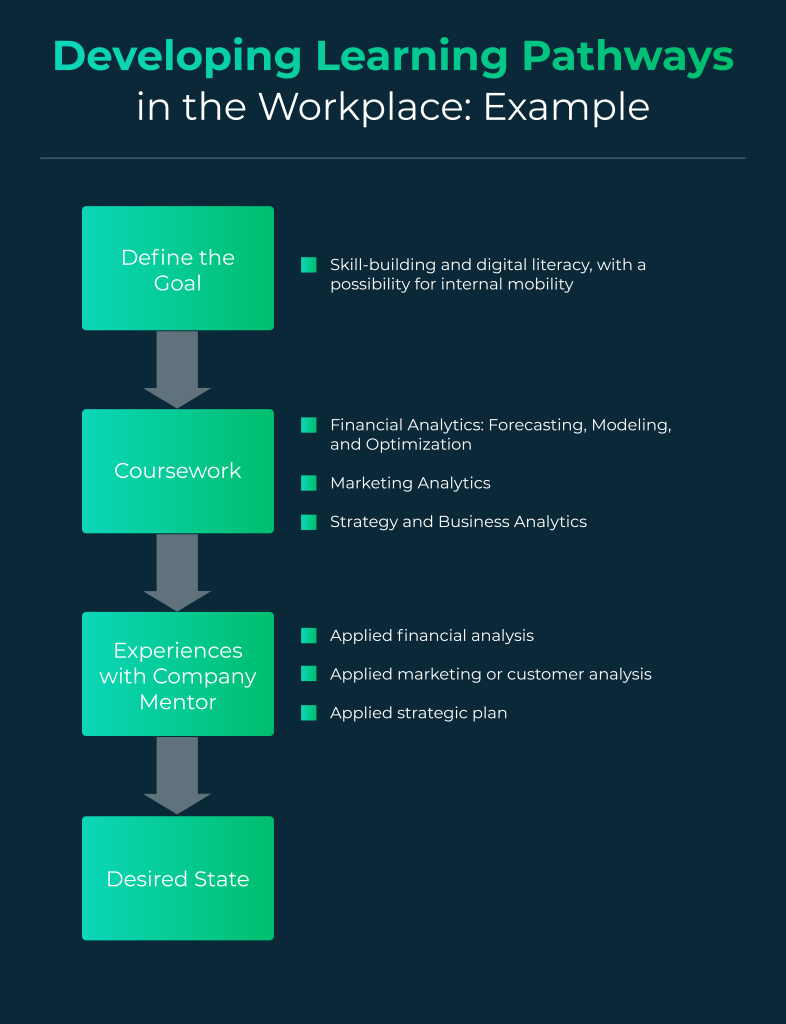A learning pathway is more than just a list of classes—it’s a strategic, individualized roadmap that helps students reach their full potential. Whether the goal is college, a trade, entrepreneurship, or something in between, a well-crafted learning pathway makes education meaningful, flexible, and empowering.
Let’s explore how we can create these pathways to help every student find their direction and purpose.
🎓 What Are Learning Pathways?

Learning pathways are customized educational routes that align with a student’s:
-
Interests
-
Strengths
-
Learning style
-
Career goals
-
Academic needs
They can include core courses, electives, hands-on learning, career experiences, and postsecondary planning. And the best part? They’re adaptable—because learning isn’t one-size-fits-all.
Think of it like a GPS: you still reach the destination, but the route depends on where you’re starting and how you prefer to travel.
🧠 Why Personalized Pathways Matter
When students feel ownership over their learning, everything changes. Here’s why pathways are so powerful:
✅ 1. Boost Engagement
Students are more motivated when the material connects to their passions and goals.
✅ 2. Support Diverse Learners
Pathways accommodate students with different abilities, languages, or learning styles.
✅ 3. Encourage Real-World Skills
Work-based learning, internships, and career exploration help students see the “why” behind what they’re learning.
✅ 4. Prepare for the Future
Whether students choose college, career, or service, pathways prepare them with academic and life skills.
✅ 5. Promote Equity
When pathways are thoughtfully designed, they can close opportunity gaps and provide access to rigorous, relevant learning for all students.
🛠️ Elements of an Effective Learning Pathway
Not all pathways are created equal. Here’s what makes a good knowledge:
1. Student Voice and Choice
Students should help design their path. What are they curious about? Where do they see themselves in five years?
2. Clear Goals and Milestones
Each pathway should have checkpoints to guide progress—like passing a certification, completing a capstone project, or mastering a key skill.
3. Flexible Curriculum Options
Let students choose from a mix of:
-
Core academics
-
Dual enrollment or AP classes
-
CTE (Career and Technical Education) programs
-
Electives tied to their interests
-
Online or hybrid learning options
4. Advising and Mentorship
Counselors, teachers, or career coaches should regularly meet with students to reflect, adjust, and stay on track.
5. Integration of Real-World Learning
Include things like:
-
Job shadowing
-
Internships
-
Service learning
-
Career fairs
-
Industry certifications
These experiences bring learning to life.
🧭 How to Create a Learning Pathway (Step-by-Step)
Here’s how I usually help schools and educators develop learning pathways:
Step 1: Start with Student Conversations
Ask open-ended questions:
-
What subjects do you enjoy?
-
What kind of work would you love to do someday?
-
Do you prefer working with people, things, or ideas?
Step 2: Identify Strengths and Supports
Use academic data, learning style surveys, and informal observations. Determine if a student needs enrichment, support, or both.
Step 3: Set Short- and Long-Term Goals
This might include:
-
Earning a diploma or GED
-
Getting into a specific college or program
-
Entering a trade or industry
-
Building soft skills like communication and time management
Step 4: Choose Courses and Experiences
Mix traditional and non-traditional options—some in school, some outside it. Make sure every choice connects to the student’s vision.
Step 5: Review and Revise Regularly
Pathways aren’t set in stone. They should evolve as students grow. I recommend check-ins at least once a semester.
📚 Examples of Personalized Learning Pathways
Here are a few pathway types that schools are using:
🧪 STEM Pathway
Focus: Science, Technology, Engineering, Math
Includes: Robotics, AP Physics, coding bootcamps, STEM fairs, internships at tech companies
🎨 Arts and Design Pathway
Focus: Visual or performing arts, fashion, design
Includes: Studio electives, gallery visits, digital media labs, portfolio development
🛠️ Skilled Trades Pathway
Focus: Carpentry, plumbing, automotive, welding
Includes: CTE classes, certifications, job shadowing, apprenticeship programs
🩺 Health Sciences Pathway
Focus: Nursing, EMT, sports medicine
Includes: Anatomy, medical terminology, CPR certification, hospital internship
Each one offers academic rigor + real-world relevance.
✅ Final Thoughts: One Path Doesn’t Fit All
Every student deserves a chance to learn in a way that fits them—not a generic plan, but a personal journey that reflects who they are and where they want to go.
Learning pathways aren’t just about school—they’re about life. They help students dream bigger, plan smarter, and walk into the future with confidence.
So let’s build systems that listen to students. Let’s guide without forcing. Let’s create more ways for young people to succeed—their way.


